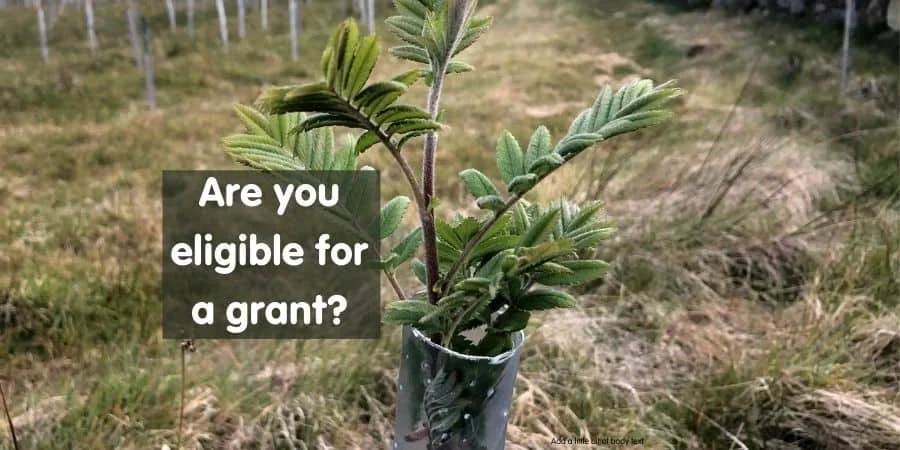Own some land that’s 0.20 hectares (half an acre) or more in Northern Ireland? Apply for a DAERA grant that covers all costs to plant a woodland or forest on your land. If eligible, you’ll also get an annual payment for 10 years. See advice from those who’ve done it.
Apply for a DAERA grant
Farmers, private landowners or public sector organisations can apply for the Department of Agriculture, Environment and Rural Affairs (DAERA) new:
- ‘Small Woodland Grant Scheme’ for 0.20 hectares or more, or for the
- ‘Forest Expansion Scheme’ for 3 hectares or more
Landowners who wish to plant this winter must apply for:
- the Small Woodland Grant Scheme using the online application by 10 pm on Thursday 30 September 2021 (Closed, no longer accepting applications)
- the Forest Expansion Scheme by 3 pm on Tuesday 31 August 2021. (Closed, no longer accepting applications)
All scheme information is available online:
What the grant includes
Successful applicants will receive:
- a grant that covers the following costs: initial ground preparation, cost of trees (from a defined list), tree planting, weeding, monitoring and protection. You can plant your own woodland, use existing farm labour or employ a contractor to do some or all of the work
- an annual payment (Premia) for 10 years when trees are planted on land that’s been used for agricultural purposes. These payments cover the loss of income from the agricultural land.
The Small Woodland Grant Scheme information booklet has the annual payments on page 7 and they’re on page 14 in the Forest Expansion Scheme information booklet. - Fencing grant is also available where necessary to protect the new woodland from stock for both schemes.
Full details at: DAERA forestry grants.
Advice from those who’ve done it
Many landowners in Northern Ireland have taken part in previous DAERA woodland and forest grants schemes and some have kindly agreed to publish their experiences below.
They’ve probably never thought of themselves as a ‘Climate Heroes’, but their decision to take part in the grant schemes has earned them the title (!) because the trees that they’ve planted are helping to clean the air we breathe, remove CO2 from the atmosphere, improve biodiversity, protect soil and improve water quality.
The Todd’s farm in Boardmills
Converting farmland to woodland has been very worthwhile in Martyn Todd’s experience for several reasons:
- it’s profitable due to the grants from DAERA and he believes beef and dairy farmers with smaller farms should consider converting some of their land to woodland or forest
- the trees encourage so much wildlife, biodiversity and they clean the air we breathe
- he’ll be leaving something beautiful behind and one of his great pleasures is seeing the newly planted trees getting their leaves
Thirty years ago, with the help of a grant from DAERA, Martyn planted 2.4 hectares (6 acres) of mainly oak trees where cattle used to graze.
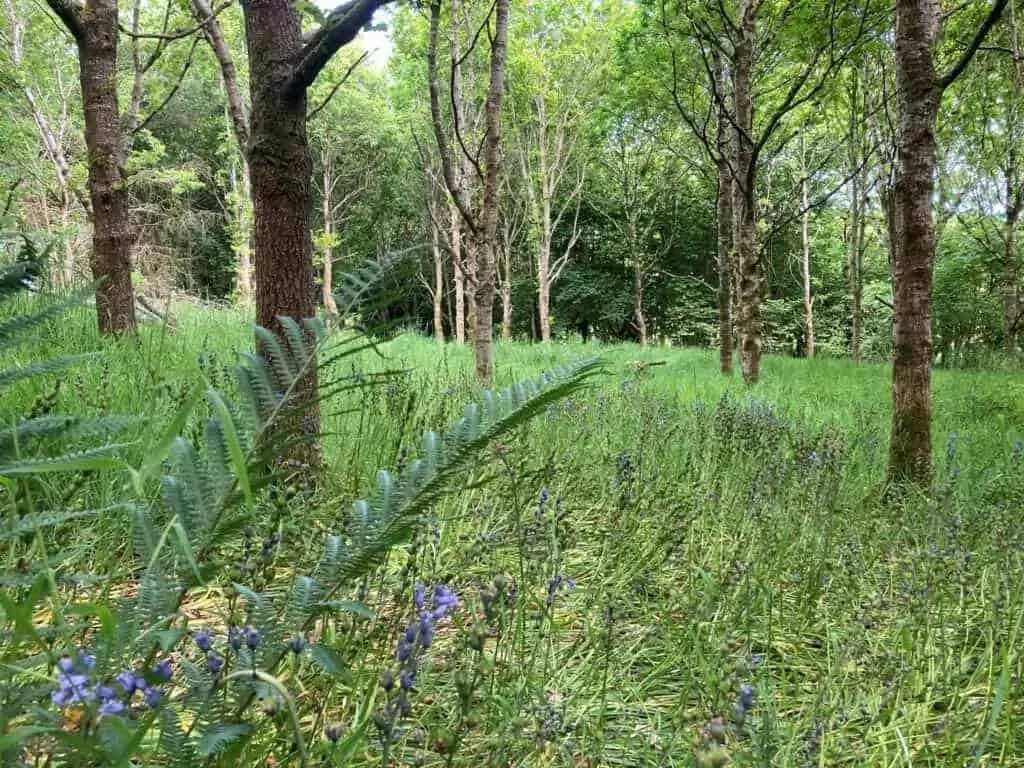
This year Martyn took advantage of DAERA’s Forest Expansion Scheme Grant and had 4 hectares (10 acres) of native Irish trees planted by a local company specialising in native woodland creation. The grant covered the initial ground preparation, the cost of the trees, tree planting, weeding, monitoring, tree protection and the management of it all by a local company. Martyn also qualified for the annual payment (Premia) for 10 years because the land was previously used to grow barley and silage.
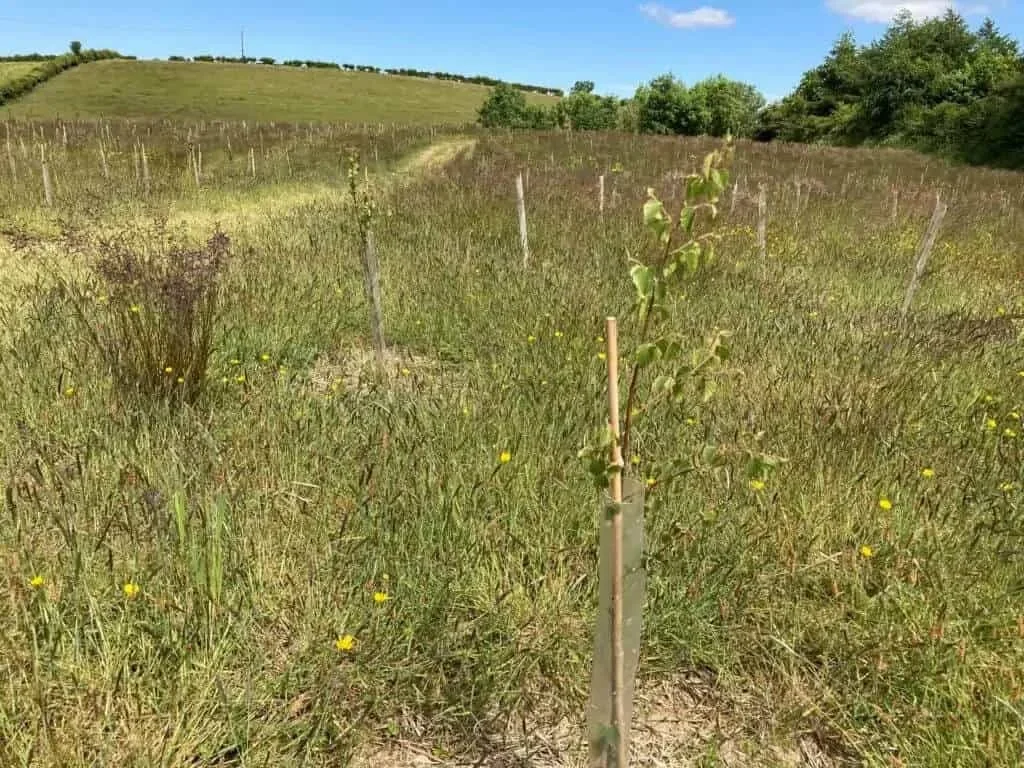
There have been some pleasant surprises along the way like the wildlife that the trees have attracted. The older woodland attracted a deer which raised a fawn. There are also squirrels, jay, sparrow hawk and the ponds they’ve created near the woodland have brought newts, frogs, dragonflies and moorhen.
To date, Martyn has planted 10,000 trees on his land and quoted the old saying that ‘The best time to plant a tree is 20 years ago, the second best time is today!’
The Miller’s farm in Desertmartin
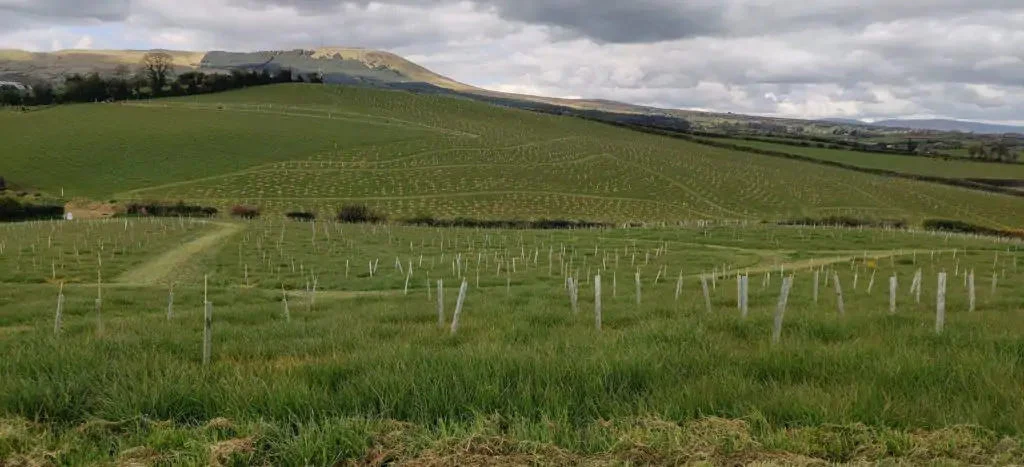
David Miller heard about DAERA’s Forest Expansion Scheme through other people that have taken part including a relative who’d planted a forest 14 years ago.
Commenting on the application process David said it was straight forward and his appointed forestry agent took charge of the grant application and handled all the logistics from sourcing the trees, planting and maintenance like spot spraying. They also installed some gates. A very small percentage of the trees might need replacing and the grant scheme allows for that too.
David’s converted grassland that he used to rent out to a dairy farmer for silage, to a 9 hectare forest where 16,740 trees were planted at the end of February early March 2021.
The environmental impact of the forest is important to David and he’s really excited about having a forest on the farm and leaving it behind for perpetuity.
The forest includes mainly native trees like oaks, wild cherry, crab apple, spindle, alder, rowan, hazel, willow and there are a few Scots pine. Having such a large range of tree species makes the woodland more resilient to climate change and pests and diseases.
The Marks family farm in the Mourne Mountains
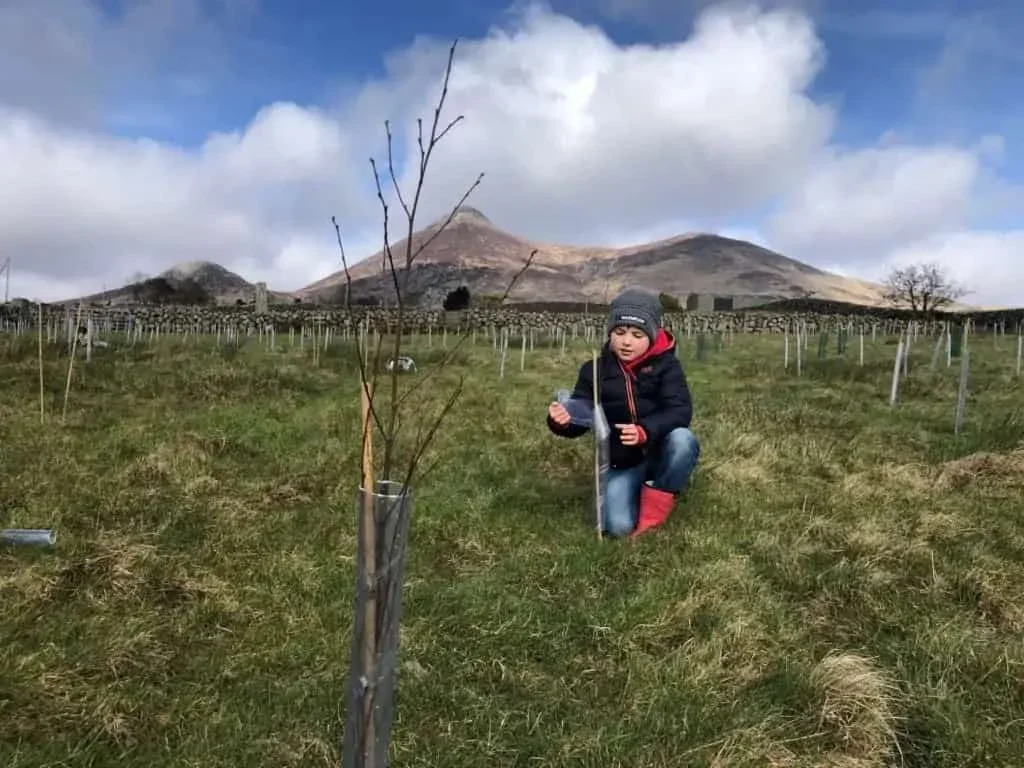
William Marks has always loved the idea of planting trees on their farm because it had very little tree cover. He started his search for trees online to see if there were any bulk buying deals and came across a local forestry agent who made him aware of DAERA’s Small Woodland Grant which he applied for.
William’s enthusiasm for planting the woodland got the whole family excited about the project and they took the decision to plant all the trees themselves and maintain them! Their tree supplier provided all the advice he needed about which trees to plant, the best way to approach the planting and how to care for the trees.
As soon as DAERA approved the grant to pay for the trees, 2,000 trees were delivered to the farm and the family got planting. The record was 500 trees a day and within 5 days the planting was completed at the beginning of March 2021.
The field where sheep used to graze now has 500 oak trees, some Scots pine trees and a variety of trees that are great for bees, pollinating insects and birds such as:
- hawthorn which have both blossom and berries
- rowan trees which have a spectacular display of orange or red berries in autumn when their leaves turn a brilliant flame colour. The berries cover hard seeds that need to be eaten by birds before they can germinate
- crab apple trees that produce clouds of blossom while fruits and foliage provide rich autumnal colour.
The remaining 1,000 trees are a mixture of hazel, alder and birch. These were planted in groups of 30 to 40 keeping alder for any wet patches in the field. These trees were chosen for their ability to coppice well. Coppicing is cutting down trees when they are young – the stump then produces several shoots that grow very quickly as the root system is already well established.
The cycle can then be repeated every 10 to 20 years. In approximately 10 years’ time William plans to coppice around 100 trees a year to provide a continuous supply of firewood.
An interesting fact about hazel trees is that if they’re left to grow they’ll live up to 80 years old but if they’re continually coppiced, they can live for several hundred years.
Another benefit of cutting the trees is that it lets light into the woodland and so the ground cover is rejuvenated again until the trees are fully grown. Where these trees are planted in the woodland is crucial, so that when they’re cut down you hardly notice it.
William says it’s one of his great pleasures to take a walk around the woodland to see what’s new. He’s also created a meandering path through it.
NI Climate Action
To keep up to date with actions, opportunities and issues in Northern Ireland relating to climate change, go to: FarmingMYNI on Facebook, MyNILife on Facebook, twitter and Instagram or visit MYNI website’s home page.
